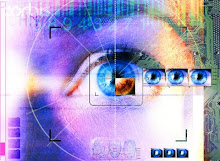Retinal scanning is part of biometrics, the science that automatically identify people through bodily characteristics, such as fingerprints, eye retinas and voice patterns. The most popular form of biometrics employed today is of course the fingerprint. However, the error rate for fingerprint identification is quite high. A retinal scan, on the other hand, is more accurate and has an infinitesimal rate of error, thing that make it better than its close cousin, the iris scan, which is slightly less precise.
A retinal scan can produce almost the same volume of data as a fingerprint image analysis. However, it is probably the most accurate biometric available, far surpassing the fingerprint in both reliability and accuracy.
Some biometric identifiers, like fingerprints, can be fooled. This is not the case with a retinal scan. A deceased person's retina deteriorate too fast that it can not be used . It is for this reason that retina scan technology is used for high end access control security applications.
A strong competition to the retinal scans was launched by iris scanning technology as well. The number of companies offering iris scanning are increasing. The main reason is the fact that the iris is also unique and offers high confidence in identification, and the main advantage of the iris scans is the ability to perform them from a distance of up to three feet and a short time of scans.
References:
Nation Masters http://www.nationmaster.com
http://www.cse.msu.edu



Aucun commentaire:
Enregistrer un commentaire